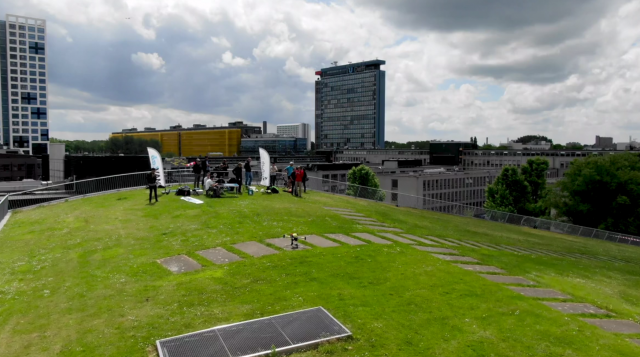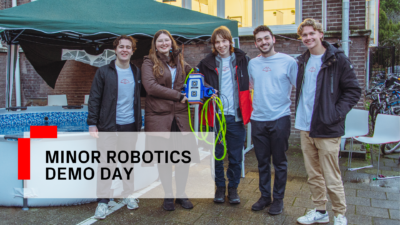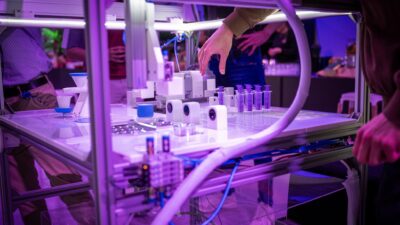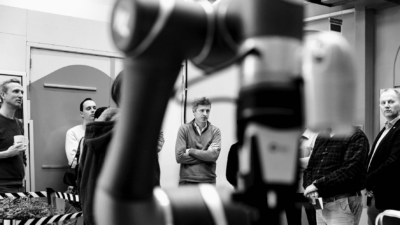‘It would be hard for anyone to miss the fact that the number of drones is on the rise,’ says Bart Remes, drone researcher from the Micro Aerial Vehicle Lab (MAVLab). ‘However, rapid technological developments mean that drones are also changing. Drones can not only do a lot more, they are also becoming more autonomous, which is an area into which the university is conducting a great deal of research. Legislation was lagging behind these rapid developments, but that is set to change following the publication of the new European drone legislation in June.’
“We are going to fly a drone over a densely populated area and out of sight of the pilot”
Bart Remes – MAVLab
U-Space
The new system, ‘U-Space’, connects all drones in the airspace and makes them visible to citizens and the authorities.
During the demo flight, one of the most challenging scenarios will be tested, Remes says. ‘We are going to fly a drone over a densely populated area – the TU Delft Campus – and out of sight of the pilot – or Beyond Visual Line of Sight. The drone is a so-called priority drone. Another drone will lift off within the area of the flight, and this will need to autonomously and safely give way to the priority drone.’
Control Zone
‘During the demo, the drone will also be flying within a so-called Control Zone: the strictly-controlled area around an airport. For this flight, that is the Control Zone around Rotterdam The Hague Airport.’
The demo represents a significant test for the operation of U-Space. The flight request will be submitted to the air traffic control in Rotterdam via U-Space. Once approval has been received, the drone will lift off automatically from the roof of the TU Delft Library and fly some 700 metres to The Green Village. The drone will remain in constant contact with the tower via U-Space. In the event of imminent danger, air traffic control can instruct the drone controllers and other air traffic.

Scientific innovation
For this unmanned flight, researchers from Delft University of Technology have developed technology that uses U-Space and with which the drone fully autonomously registers all other air traffic in its vicinity, and constantly adjusts its own flight path accordingly.
In tests conducted in Australia last year, the MAVLab drones already proved that they could perform well in a large area. However, the challenge for the flight at Delft University of Technology is much greater: the drone will be flying in a small area, which it must stay within at all costs.
VUTURA
The demo is part of the European VUTURA project, a SESAR Horizon 2020 project. It is being headed by the NLR. Other partners are Delft University of Technology, the municipality of Enschede, UAV International, AirHub, the LVNL, Unifly, AirMap, Unisphere and Robor Electronics.
Click here to read the full press release.



